Have you ever wondered what the USB color of your computer is for? Each version of the USB technology measure has its own color coding. Depending on the model, you may have several input terminals of different shades, or you may have seen other computers using different colors than your PC. Here, I want to clarify the meaning of each color and give a few explanations on this topic.
You can quickly see that it is very relevant to the type and version of the USB port. Learn all of these connectors that have given life to many peripherals, including flash drives and keyboards. In this comprehensive guide, you can find out the meaning of the color of the USB.
All information about the color of the USB is theoretical. So, what we're going to talk about here is that, depending on the manufacturer, there might be variations in the market. I will talk about this later. Let us look at the complete details and features of each USB cable:

Parameter comparison for each USB cable
Computers, tablets, and peripherals typically have at least one of these three types of USB ports. New devices like USB-C, which is compact, have a high data transfer rate, and can supply up to 240W of power. The USB-C cable also supports high-resolution 4K and 8K video transmission. Lightning is similar in operation to USB-C but uses a different connector.
The USB connection is even faster! Products compatible with the Thunderbolt™ 3 standard are on the market. This latest generation can deliver both power and bidirectional data transfer at speeds up to four times faster than USB 3.2 Gen 2, creating unprecedented computing options for personal devices. If you look closely at the USB device or port, you may notice that it has a USB symbol that indicates the port's compatibility or capability. It began with a three-pillar path called the "Trident Logo" by USB-IF. From a design point of view, this symbol indicates that the basic USB connection port can connect to various cables and devices.
| Standard | Also Known for | Logo | Year Introduced | Connector Type | Max. Data Transfer Speed |
| USB 1.1 | Full Speed USB | USB-AUSB-B | 12 Mbps | ||
| USB 2.0 | Hi-Speed USB | 2000 | USB-AUSB-BUSB Micro AUSB Micro BUSB Mini AUSB Mini BUSB-C* | 480 Mbps | |
| USB 3.2 Gen 1 | USB 3.0USB 3.1 Gen 1SuperSpeed | 2008 (USB 3.0)2013 (USB 3.1) | USB-AUSB-BUSB Micro BUSB-C* | 5 Gbps | |
| USB 3.2 Gen 2 | USB 3.1USB 3.1 Gen 2SuperSpeed+SuperSpeed 10Gbps | 2013 (USB 3.1) | USB-AUSB-BUSB Micro BUSB-C* | 10 Gbps | |
| USB 3.2 Gen 2x2 | USB 3.2SuperSpeed 20Gbps | 2017 (USB 3.2) | USB-C* | 20 Gbps | |
| USB 4 | USB4 Gen 2×2USB4 20Gbps | 2019 | USB-C* | 20 Gbps | |
| USB 4 | USB4 Gen 3×2USB4 40Gbps | 2019 | USB-C* | 40 Gbps |
What are the USB cable types?
Type 1: USB-A

A standard connector is attached to one end of most USB cables. With a rectangular connector, it can be attached only in one direction. USB-A is most commonly used in computers and power outlets. There are also one or more on many TVs, gaming systems, cars, media players, and other equipment. When charging, connect the USB-A side to a USB plug or to a laptop or computer. The USB-A cable only enters the port in one direction. Cables with USB-A at both ends are rare. To avoid damage to the cable or equipment, insert the cable correctly.
Type 2: USB-B

It is an old connector, which is rarely used now. It is often used to connect a printer or external hard drive to a computer. The type B connector (technically known as the "standard B" connector) is almost square in appearance and has a square protrusion at the top. Type B ports are found in many USB non-host devices, including audio interfaces, external hard drives, and printers. A Type B plug is attached to one end of most USB cables.
Type 3: USB-Mini
As the name suggests, it is a compact connection type suitable for mobile devices. It has been replaced by micro-USB, but it is still used in cameras and MP3 players.
Type 4: Micro USB

Small connectors are used in various portable devices. Micro-USB was once the most common USB port, but it is still present in many models. This type of linkage does not need a computer to load data. However, some smartphones are moving to the new USB-C port. To avoid damage, be careful to align the port shape with the micro-USB cable.
Type 5: USB-C

The latest USB standard. Unlike the old cable, the latter usually has a USB-A on one side, and a different type on the other, and all new Samsung devices have a USB-C port. The USB-C cable enables high-speed data transfer and high-power flow, enabling faster charging of smartphones. The USB-C cable is reversible and can be inserted in any way. The device manufacturer gradually adopts USB-C. Many new Android phones, including Samsung's Galaxy 20, Note 10, and Fold. The latest models of Apple's MacBook and MacBook Pro also have only a USB-C port.
Type 6: USB 3

There is so-called "backward compatibility," and it can actually be used with old USB ports and other bulk USB cables. The USB 3 has a different shape of the connector pin, so it can withstand more frequent use. USB 3 is able to withstand more frequent use since the shape of the connector pin is different. (and the colors are usually blue, so we can tell). However, it is important to note that all devices must be USB 3 capable of high speed. For example, if you have a USB 3.1 compatible apparatus, you can employ these cables to transfer data at 10 Gbps. But if you are using an old device, you cannot get the same high-speed data transfer rate.
Briefly describe the history of USB cables.

USB stands for Universal Serial Bus. The USB cable assembly is one of the most common types of cables used primarily to connect computers and peripheral devices such as cameras, video cameras, printers, and scanners. Devices manufactured with the current USB revision 3.0 specification are backward compatible with version 1.1.
USB 1.0
In early 1996, USB 1.0 was announced as the first major release of USB. It offers a data transfer rate of 1.5 megabits per second (Mbps) at low speeds and 12 Mbps at full speeds. It also allowed for self-configuration without the need for users to change device settings to support peripherals. The interface can also be hot-swapped, allowing devices to be changed without rebooting the host computer. Despite being the first commercial version of USB, it was not widely accepted in the market, and there were few devices available to clients.
USB 1.1
A modified version of the initial standard was released in 1998. The standard, named USB 1.1, was comparable to the data transfer rate of version 1.0 but could also operate at low speeds for low-bandwidth devices. This standard was named Full Speed. Apple's iMac G3 adopted this new USB standard, and the company's machines no longer use serial and parallel ports. This move has opened the way for USB protocols to be adopted more widely in the industry and for USB products to be widely used by consumers.
USB 2.0
As PCs and their various peripherals became accepted in the market, and applications became more complex, the need for increased data transfer speeds became apparent. USB 2.0 was invented in April 2000 with a data transfer rate of 480 Mbps. However, due to bus restrictions, this dropped to 280 Mbps. For marketing purposes, it was branded as Hi-Speed. The new version now runs on 12Mbps and 1.5Mbps for devices that require less bandwidth. Plug-and-play capabilities for multimedia and storage devices were also provided, as well as power support using up to 5 V, 500 mA USB connectors.
Wireless USB
The Wireless USB standard (W-USB) is a wireless short-range network communication standard that was announced in May 2005. It has a transmission distance of 10 m and a communication speed of 480 Mbps. This standard is not currently in use.
USB Micro
The USB micro connector debuted in 2007. A compact version of a USB mini-B connector basically provides faster charging speed and data transfer than a mini-device. The USB micro connector was introduced primarily to standardize connectivity for Android and mobile devices. It should also be noted that the USB Micro connector is a physical standard and is not directly related to communication standards such as USB 1.0, 1.1, 2.0.
USB 3.0 (current USB 3.2 Gen 1)
The third significant release of the USB standard recognizes the continued demand for digital storage and bandwidth increase in the demand. The USB 3.0 standard was issued in November 2008. The USB 3.0 standard was unleashed in November 2008 and enabled data transfer speeds of up to 5 Gbit/sec (Gbps) but generally worked at about 3 Gbps. With this feature, the standard is now known as SuperSpeedUSB. USB 3.0 doubles the number of four connected lines of USB 2.0 hardware to eight, enabling two-way data transfer.
USB 3.1 (or 1 x USB 3.2 Gen 2x)
The USB 3.1 version is the same provisional standard as 3.0, except that the data transfer speed has been increased to a maximum of 10 Gbps (USB 3.1 Gen 2). Like USB 3.0, the name of USB 3.1 has also been updated and is now called USB 3.2 Gen 2. With the upgrade of the transfer rate, it is now called SuperSpeed+. In version 3.1, released in July 2013, the same connectors (USB A, B, mini & micro) were used as in 3.0.
In 2014, the USB Type C connector was also disclosed. First presented in 2012, the Type C connector provides data, display, and power signals in a single small connector and is reversible. Type C, which is about one-third the size of the original USB type A connector, is oval and slightly thicker than USB mini and micro versions.
USB 3.2 and USB Type C
USB 3.2 replaces the USB 3.0/USB 3.1 standard with retrospective changes to these standards. Driven by the continued need for higher speeds, another temporary measure, USB version 3.2, was introduced in September 2017. By increasing the data transfer channel from one lane to two lanes, the data transfer speed has effectively doubled to 20Gbps (USB 3.2 Gen 2x2). This was achieved by adding a USB Type C connector. A high speed of 20 Gbps is possible only when using a USB Type C cable that can transmit 10 Gbps in each direction with two wire pairs.
USB 4.0
USB 4.0, released in August 2019, is based on the Thunderbolt 3 protocol. It features data transfers up to 40Gbps and power transfers up to 240W in the newer Power Delivery 3.1 standard. Thunderbolt 3 was developed by Intel in 2015 to support high-speed data and video transfer.
The USB 4.0 version does not require a new connector and uses an existing Type C connector. Thus, the data signal and the video signal effectively share lanes, the maximum use of the bandwidth of the device is realized, and the data transfer rate is optimized. It also has backward compatibility (using adapters) with USB versions 2.0 and 3.2, although it is slower.
Each USB color corresponds to the classic interface
Most devices use a USB Type-A host (also known as a female), which looks almost the same no matter which one you see. But in practice, each color represents a different type of connection. The meaning of each color is as follows:
White USB Port

The white USB port is also famous as USB 1.X. Version 1.0 was invented in January 1996 and features full-speed data transfer of 12 megabits per second (Mbps). Despite the official commercial debut of the Universal Serial Bus technology, few products were actually used.
On the other hand, USB 1.1 was much more successful than the previous model. It was released in August 1998 and became the catalyst for wider commercial adoption of USB. The disadvantage was that data could only be transferred in one direction, but this technology has become so popular that it led to the birth of a PC without a legacy port.
Black USB Port

The black USB port, known as USB 2.0, has a much higher bandwidth than the white USB port and is the specification of the USB port announced in 2000. It was characterized by a very high transfer rate of up to 480Mbps, although it could transfer data only one way at a time.
The black USB 2.0 port provided the same functionality as the white port but with improved transfer speed and overall reliability. It is designed to work on a variety of devices, including keyboards, mice, microphones, speakers, external storage devices, and USB flash drives, and its birth is likely to be triggered by the USB 2.0 specification.
Blue USB Port

The blue USB port, known as USB 3.0 or SuperSpeed USB, appeared in 2008 and has been improved since then. The USB 3.0 port supports transfer speeds up to 5Gbps, which is approximately 10x the speed of USB 2.0.
The USB 3.0 port is very interesting and is the first port to support double communication. In other words, you can transfer two-way data simultaneously. However, it is backward supported with USB 2.0 and USB 1. X standards, the data transfer speed is limited to the capability of the lower standard.
USB 3.0 has been replaced by the 3.1 specification, which maintains the data transfer rate. In effect, only the name has been changed from USB 3.0 to USB 3.1 Gen1.
Teal Blue USB Port

The teal blue USB port represents the USB 3.1 Gen 2 and is also known as the SuperSpeed+ USB port. Launched in 2013, the data transfer speed has increased to 10 Gbps, twice the speed of the previously released USB 3.1 Gen 1 USB port.
In addition to providing excellent transfer rates, the teal USB port is backward supported with devices that use USB 3.1 Gen 1 (formerly USB 3.0), USB 2.0, and USB 1. X standards. The teal USB port also supports dual communication, but the transfer speed is limited to guest devices and low-spec devices.
Red USB Port

With the advent of USB 3.2, the 3. X standard now encompasses all of the previous specifications and has been forced to change significantly. Technically speaking, all modern devices that use the USB 3. X standard is USB 3.2. In other words, what was previously called USB 3.0 is now 3.1 Gen 1 and is now called USB 3.2 Gen 1.
Similarly, USB 3.1 Gen2 became USB 3.2 Gen2. It is important to remember that even if the name changes, the specification does not change. The red USB port is a USB 3.2 port, but it can also be a USB 3.1 Gen 1 or USB 3.1 Gen 2 port, depending on how the device manufacturer named the
Yellow USB Port

The yellow USB port is the same as the red USB port, but there is one difference - it works not only with USB 3.2 but also with the specifications of the black USB port (USB 2.0). Like the Red USB port, the yellow port is also Charge & Sleep or Always On and can charge the device while the host device is powered off or in sleep mode.
However, the yellow USB port appears to be more embedded in the laptop than in the desktop computer. Whether this is due to design is not defined by USBIF.
| Port Type | USB Type | Specifications | Transfer Speed | Remarks about the USB Port |
| White USB Port | USB-A or USB-B | USB 1. x | up to 12 Mbps | 1st Gen USB Ports. |
| Black USB Port | USB-A or USB-B | USB 2.0 | up to 480 Mbps | It is much faster than the Black USB Port |
| Blue USB Port | USB-A or USB-B | USB 3.0 | up to 5 Gbps | Twice as fast as the Blue USB Port. Excellent for large file transfers. |
| Teal USB Port | USB-A or USB-B | USB 3.1 (Gen 1) | up to 10 Gbps | If USB 2.0: up to 480 MbpsIf USB 3.0, then up to 5 Gbps |
| Red USB Port | Sleep-and-Charge Port (Type USB-A) | USB 3.1 (Gen 2) orUSB 3.2 | up to 20 Gbps | Always-On port |
| Yellow USB Port | Sleep-and-Charge Port (Type USB-A) | USB 2.0 or USB 3.0 | up to 5 Gbps | Higher power or always-on port |
| Orange USB Port | Sleep-and-Charge Port (Type USB-A) | USB 3.0 | up to 5 Gbps | Charging capable orSometimes charge only |
How to choose the right USB cable based on color?

Choosing a USB cable by color is not just a choice of appearance; it greatly affects functionality. Black cables, such as standard USB 2.0, are suitable for everyday connections. Blue cables often indicate USB 3.0 and guarantee high-speed data transfer, which is essential for large file exchanges. For Apple users, white cables are generally associated with Lightning cables. On the other hand, the red USB cable often shows the high-speed charging function, which is perfect for quick power-up. Choose braided or reinforced cables that are durable and resistant to wear and tear. When choosing the length of the cable, choose a shorter one for portability or a longer one for greater distance between devices. Always check for compatibility with the device's USB type (USB-A, USB-C, or Micro USB). Stick to a trusted brand to ensure quality and safety. Finally, you can choose a unique accessory by choosing the color of the cable that suits your taste.
Example
Suppose you have a smartphone that supports fast charging, and you transfer large files between your phone and a personal computer. In this case, it is practical to choose a red USB cable. Red usually means a fast-charging feature, which ensures that the device is charged quickly when needed. In addition, high-speed data transfer associated with red cable facilitates quick file exchange between your phone and computer, improving overall efficiency. This pragmatic choice shows that matching cable colors to your specific needs and understanding the color-coding system leads to a more customized and optimized user experience.
The technology behind Intel's Thunderbolt portfolio and how it affected the USB4 specification cannot be used to talk about the future of USB technology.
Talk about future development trends.
The USB4 initiative, promoted by the USB-Implementers Forum (USB-IF), is an industry collaboration to ratify standards and certify hardware that complies with those standards. USB-IF does not manufacture USB hardware. It's up to the vendors that support USB-IF. In short, they are trying to keep the "Universal" of "Universal Serial Bus". Intel, on the other hand, is both a USB-IF partner and a competitor. They are producing Thunderbolt products using technology that challenges the standards developed by the Forum.
Competition is sure to stimulate creativity. However, Thunderbolt 4 also gives hardware manufacturers the choice between USB-compliant and Thunderbolt-supported.
The manufacturing community is building a coercive but independent partnership between USB-IF and Intel to boost the future of the technology environment. As a result, it can be chaotic and confusing, but it is a constructive way.
USB4 and USB-IF
USB4 is the future of USB technology. The release of the USB4 specification has already been completed, and the first USB4-capable device will be in store in the near future. However, it will take time for USB4 to be mass-introduced and popularized.
The forthcoming USB4 specification promises the "adoption" of the Thunderbolt 3 protocol as proof of the forced cooperation of USB-IF and Intel.
The USB-IF intends to eliminate the confusion and confusion caused by the availability of four active USB specifications (2.0, 3.0, 3.1, and soon 3.2), including two different connector types (USB-A and USB-C). The USB4 specification also complements the previously missing community Thunderbolt 3 support.
Thunderbolt 3 and Intel
Thunderbolt 3 (T3) was designed to "allow one cable to replace all other cables," regardless of the computer peripherals or other devices that it connects to for communication or charging.
Initial deployment and adoption of T3 are limited by cost and lack of support information. Intel has kept the details of how the T3 works in secret. It becomes a matter of customer "comfort" with this technology. USB is well-known and familiar.
The specifications of USB4 and Thunderbolt 3 are not the same. Thus, it will depend on whether the USB vendor will incorporate the T3 protocol, but it may not.
USB4 and Thunderbolt 4 represent the future of device connectivity and battery charging for portable devices. There is a strong competitive environment between Intel and the USB-IF and Propulsion Group.
FAQs
Q: What is USB 3.0, and are its ports always blue?
A: USB 3.0 is a version of the Universal Serial Bus standard that offers faster data transfer speeds than its predecessor. While a common convention is to color USB 3.0 ports blue, it's not universal; manufacturers may use different colors or leave them uncolored. The blue color is a helpful indicator but not a strict rule.
Q: What are the differences between USB A, B, and C connectors?
A: USBs A, B, and C are different types of USB connectors. USB-A is a standard rectangular connector found on most computers. USB-B is often square and used for printers and other equipment. The USB-C is becoming widely adopted as a new and more versatile connector that delivers smaller, reversible, faster data transfer and power delivery.
Q: Is Thunderbolt the same as USB-C?
A: Thunderbolt and USB-C are not identical, but they can share the same port. Thunderbolt is a high-speed data transfer technology developed by Intel that typically uses a USB-C connector. However, USB-C is a widely used connector standard that supports various protocols. Not all USB-C ports support Thunderbolt, but they provide high-speed data transfer and power supply.
Q: Is USB Type B outdated?
A: USB Type B isn't necessarily outdated, but it's becoming less popular with consumer devices. It is still used in certain devices, such as printers and some audio devices. However, as an industry trend, more versatile and reversible USB Type C connectors are preferred, and the use of USB Type B has declined in recent consumer electronics.
Conclusion
In conclusion, understanding the hidden meaning of the different colors of the USB port provides valuable insight into the type and version of USB technology. In this comprehensive guide, we explored the history, types, and functionality of various USB cables, shining a light on their evolution and compatibility. As technology advances, USB 4 will emerge in the future, and USB-IF and Intel are expected to work together to increase connectivity. The color-coded USB port visually demonstrates its functionality, from classic white to fast teal and red options. Choosing the suitable USB cable by color is not just a matter of aesthetics; it is a strategic decision to optimize functionality and user experience in evolving device connectivity situations.

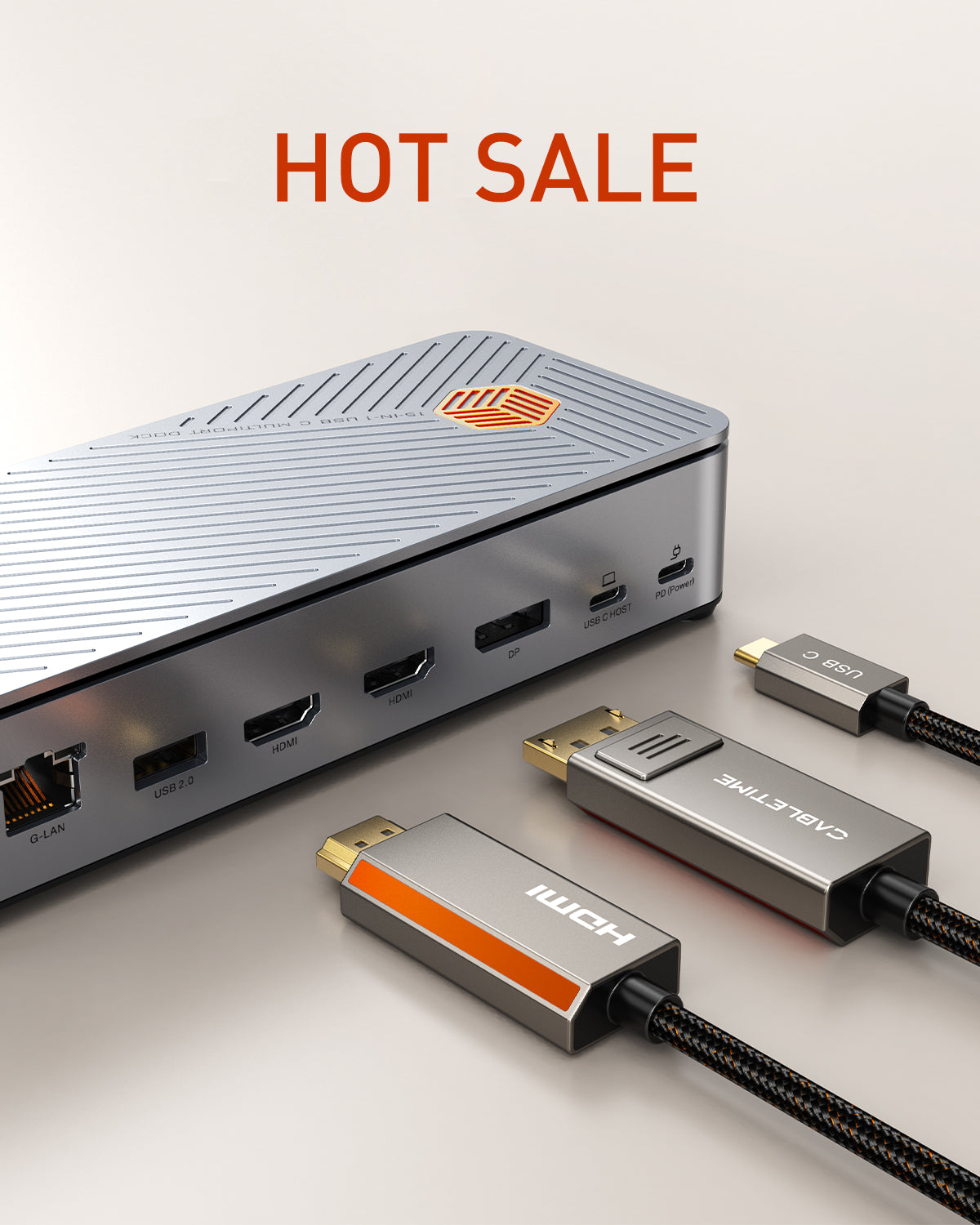
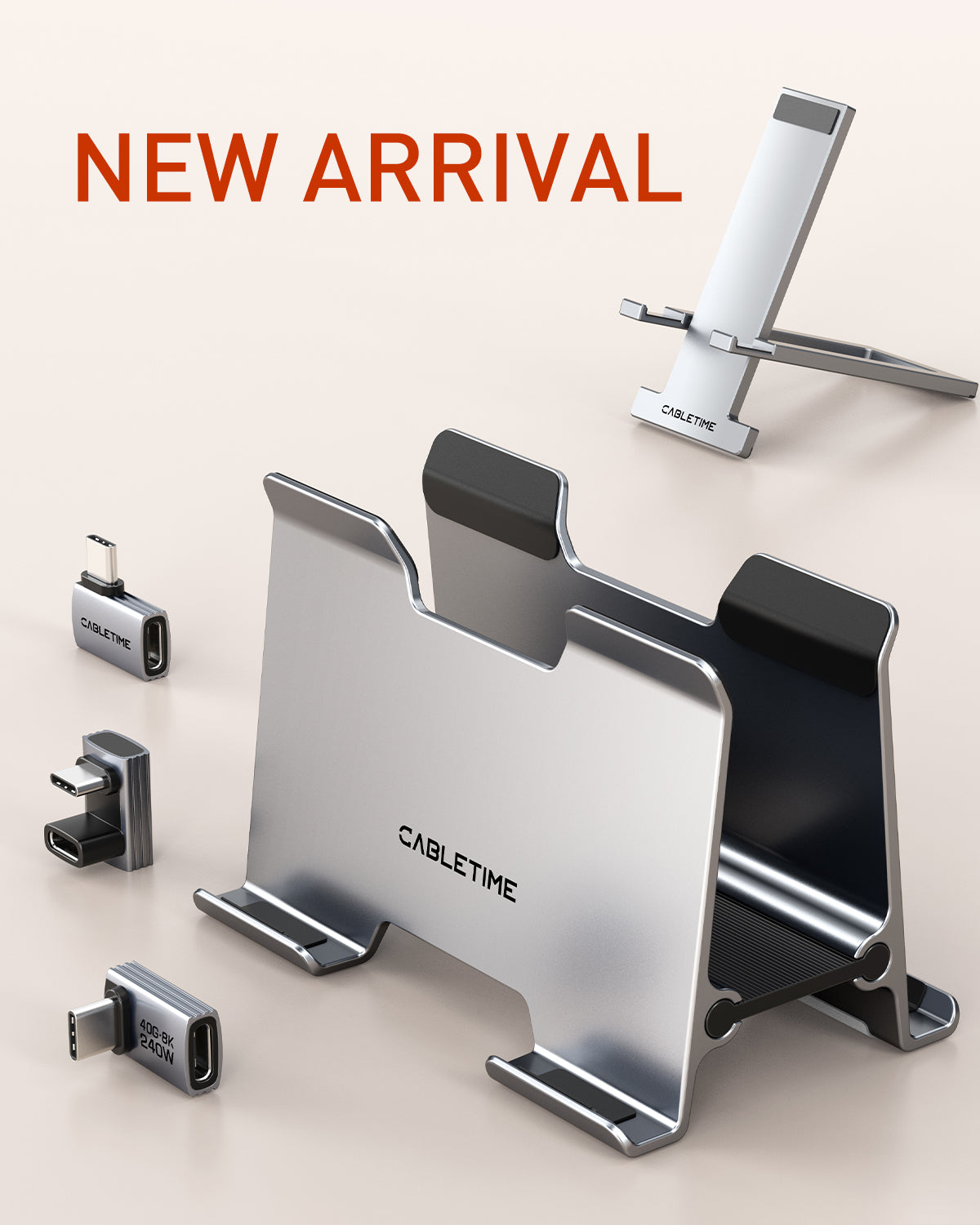
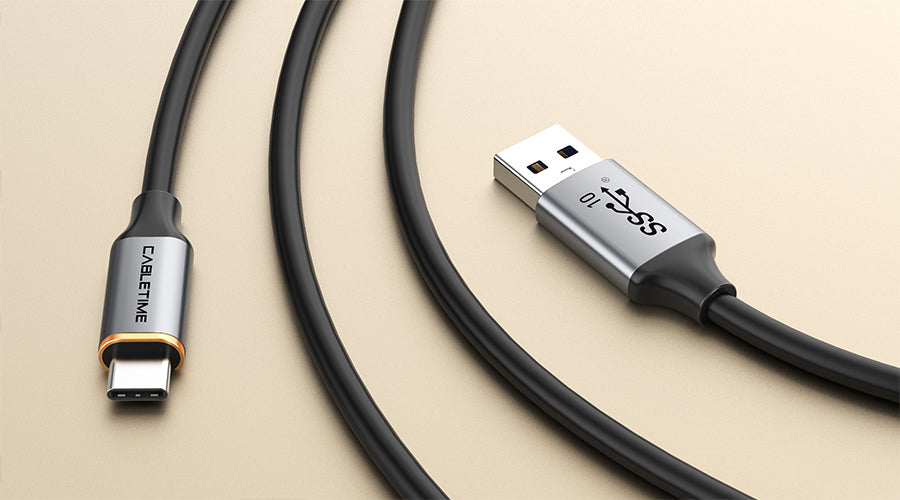
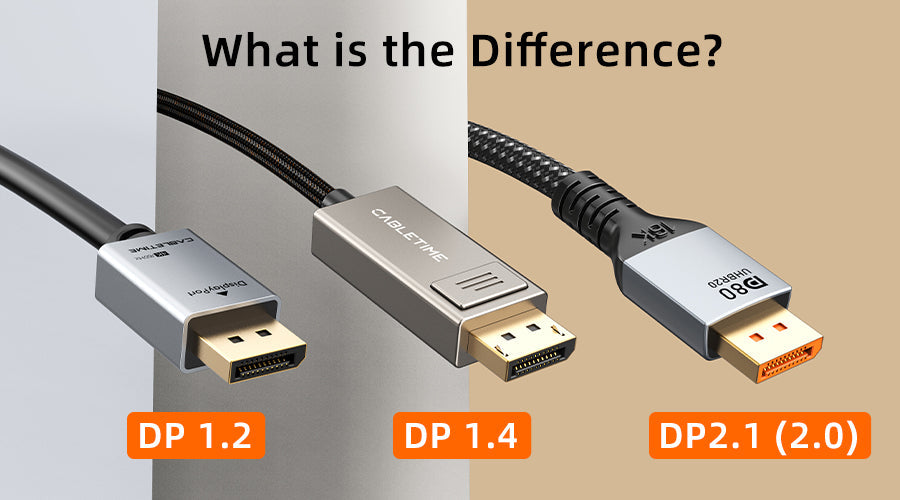
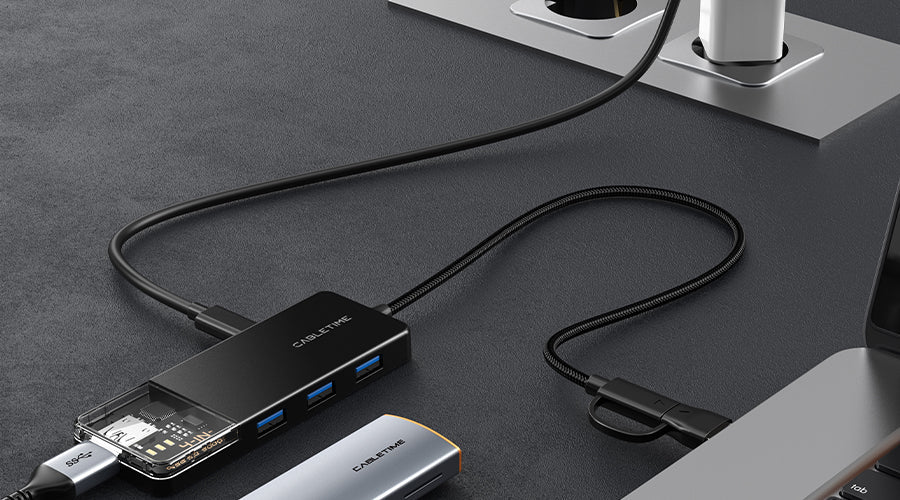
4 comments
Riscy00
Can u detail what voltage range it support from standard 5V and difference between q and PD for type A which seem to be non standard
Brian J. Oinos
To add on to Mr. Piet Dummie above me here… He pointed out the blue port error, I will point attention to the black port “remarks column box” in the chart. It should say “It’s much faster than the WHITE port” not black. I make mistakes just like this here and there. Not a big deal, I’m sure anyone interested in learning the difference between these cables/ports can easily figure out what you meant to say. I thank you for sharing your knowledge on these cables/ports. I give you a “LIKE” on it overall. I am much smarter than the average user now. I bet the majority of people don’t even realize there are different colors and that the different colors have different meanings and applications, LOL. Oh well you can lead them to the water but you can’t make them drink it, they need to make that effort LOL! Good Stuff!!!
Piet Dummie
In the table you list for the blue USB port “Twice as fast as the Blue USB Port.” That’s a little error there.
Heinz Dieter Wolfgang Heinrich Dieter
Also des is ja a subba addigel obba ich finds a gschmarrn dos des so komplex seia muss. “USB Type B isn’t necessarily outdated” find i dollo.
Leave a comment
This site is protected by hCaptcha and the hCaptcha Privacy Policy and Terms of Service apply.